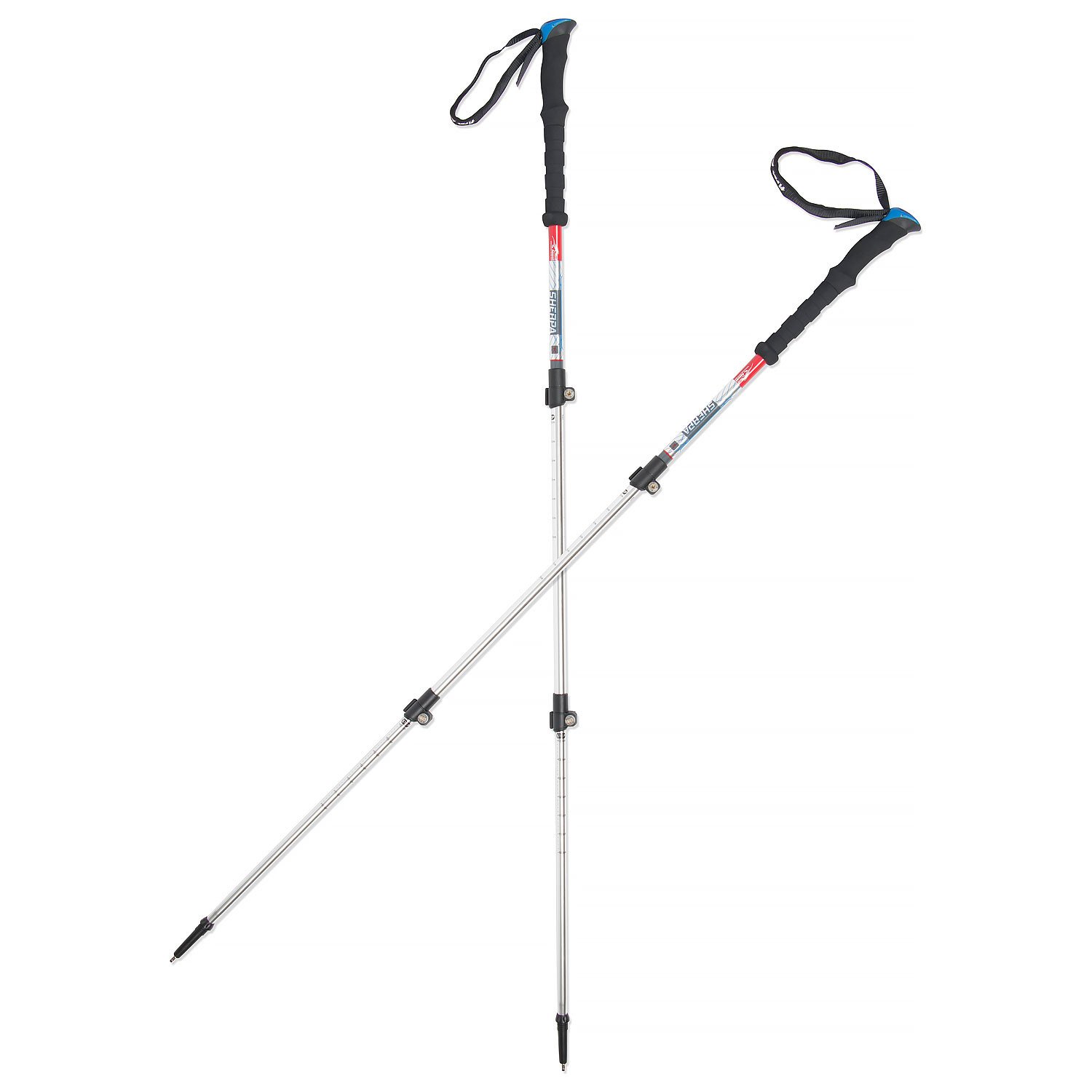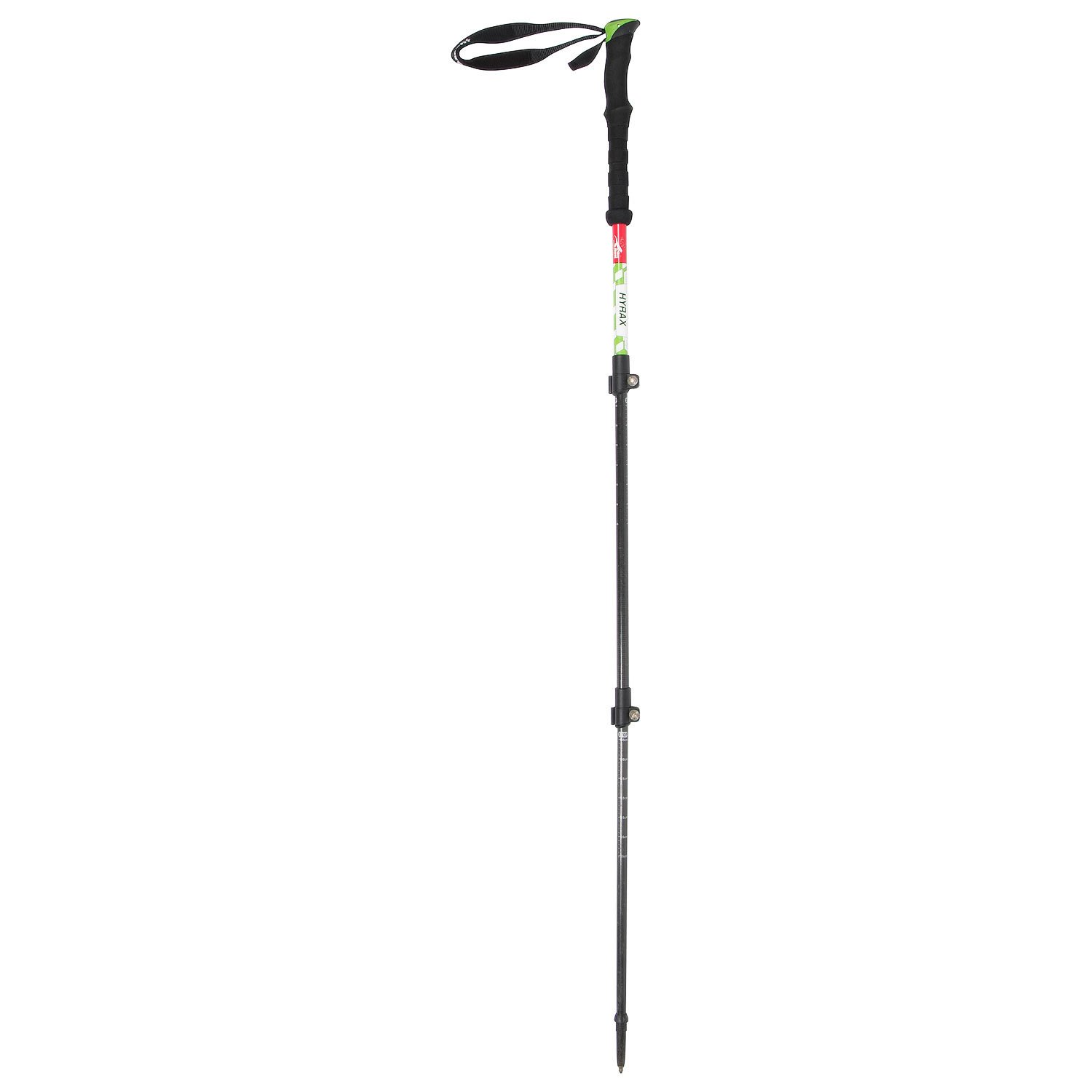The main aim of any trekking pole is to provide hikers with stability and rhythm when walking on rough terrain. They’re generally not needed on smoother surfaces, but can increase the physical exercise of the hiker when used in this capacity for a total upper and lower body workout. Trekking poles often get mistaken for ski poles when in use, as they have some features in common. Both have baskets at the bottom of the pole to ensure that dirt, grime or debris doesn't cause your trekking pole to get stuck.
In order to choose the right trekking pole for your next adventure, we’ve compiled the below info to assist you in making the right decision.
Advantages of Trekking Poles
Trekking poles provide better balance and footing on downhill hikes as they decrease the amount of stress on your joints and legs. On uphill climbs, trekking poles transfer weight to your shoulders, arms and back, which assists in reducing leg fatigue. When it comes to crossing streams, loose rocks and slippery surfaces, the right trekking pole can mean the difference between a serious injury, and an enjoyable hike.
Trekking poles are most valuable to those with weak or damaged knees and ankles. Some studies have found that trekking poles can reduce compressive force on your knees by up to 25%. It’s worth mentioning that trekking poles will not decrease your overall energy expenditure, but rather assist in distributing your energy usage in a way that can help your hiking endurance.
Types of Trekking Poles
There are two things to consider when purchasing a trekking pole.
- The type of terrain you will be hiking or running in
- The health of your knees, hips and joints.
Key Considerations Before Purchasing:
Weight & Price
Generally speaking, the lighter the pole, the more expensive it is. Lightweight poles offer an obvious advantage of less swing weight, which makes them easier and quicker to move. Over the course of a multi-day hike, this means less fatigue.
Shaft Materials
The makeup of the pole shaft is a key determinant of its weight and price.
- High-grade aluminium: Under high stress, aluminium can bend, but is unlikely to break.
- Carbon fibre: Under high stress, carbon-fibre poles are more vulnerable to breakage or splintering than aluminium poles. If you prefer hiking in rugged, remote areas, this is definitely something to keep in mind.
Locking Mechanism
Trekking poles are identified by their 2 or 3 interlocking sections. This level of adjustability allows you to adapt the poles to your height and terrain. Most poles use a twist-and-lock system in which you find the desired length and then twist the pole hard to the right to hold it securely in place.
Grips
The shape and feel of the pole’s grip varies so it’s best to try several models. Some grips are angled or positioned into the upper pole section to be ergonomically neutral. Others feature grips that extend down the shaft, allowing you to grasp the poles more easily on short uphill sections. Several materials (or a blend of materials are used):
- Cork: Resists moisture from sweaty hands, decreases vibration and best conforms to the shape of your hands.
- Foam: Absorbs moisture from sweaty hands and is softest to the touch.
- Rubber: Insulates hands from the cold, shock and vibration, making it best to use on colder hikes. Rubber is more likely to chafe or blister sweaty hands, so it’s less suitable for warmer weather.
When to Vary Your Trekking Pole’s Length
- Hiking Uphill: Shorten the poles by a few centimetres to increase load-bearing pressure.
- Hiking Downhill: Lengthen the poles for better balance and control.
- Hiking on Level Ground: Forearms should be parallel to the ground when you’re holding the grips and the tips are on the ground.
- Hiking Traverses: Down-slope poles should be longer than up-slope poles (simply grab the pole lower if it comes with an extended grip).
Using the Straps
Since wrist straps bear much of the load, it’s important to use them correctly. Put your hand up through the bottom of the strap, not down from the top, before grasping the grip. Adjust the strap so it fits snugly around your wrist. The anti-shock system helps absorb stress when going downhill, but it’s best to turn it off when walking uphill or on level terrain.
Browse and shop our wide range of trekking poles for your next outdoor adventure.


